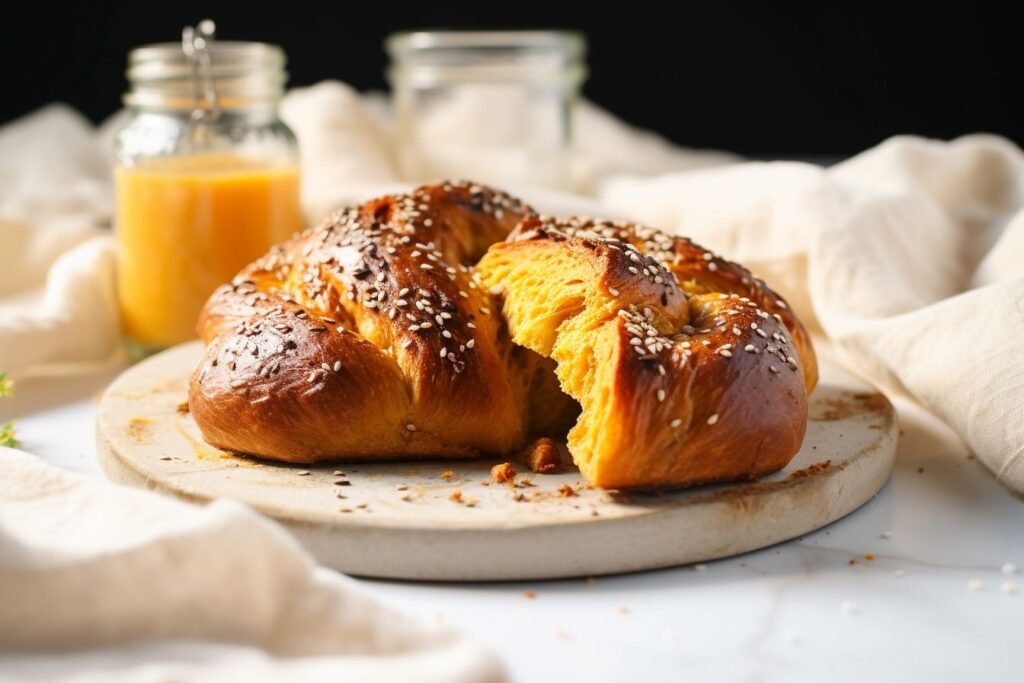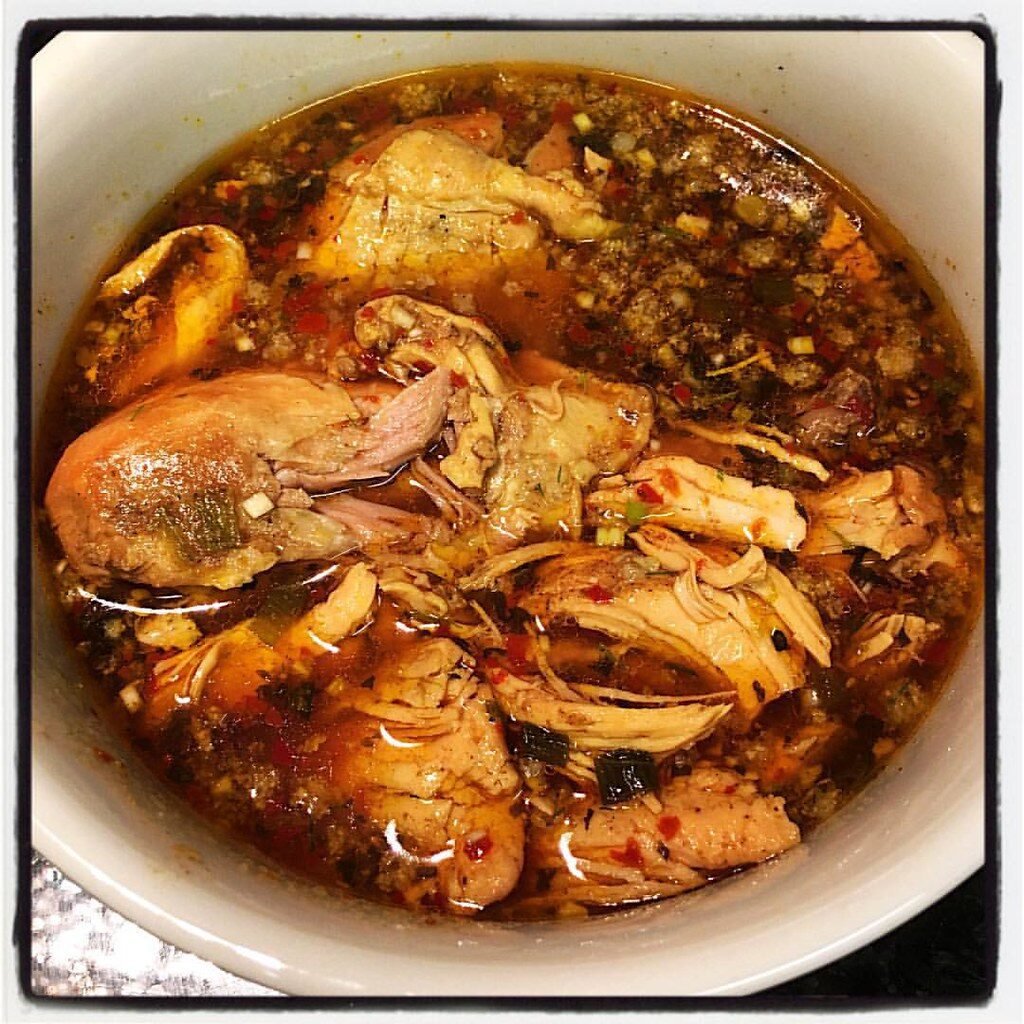As a big fan of bread, I was initially hesitant to try the keto diet. But then my wife and I stumbled upon a Middle Eastern bakery in Brooklyn, NY that changed everything. There, we discovered keto challah bread – a low-carb, high-fat version of the traditional Jewish bread that is a staple at Shabbat dinners and holidays.
Made with lupin flour, mozzarella cheese, and eggs, this is a game-changer for those following a low-carb or keto lifestyle. Not only does it have the same fluffy texture and slightly sweet taste as regular challah bread, but it also has a fraction of the carbs. And for those who are gluten-free, this challah bread is a great alternative to wheat-based breads.
I requested a keto challah bread and a young Middle Eastern employee brought it to me. The bread had a beautiful golden color and had sesame seeds on top. It had a slightly crusty exterior and a moist interior. The bread was not too dense and had a perfect balance of flavors.
The bakery employee served the bread with a side of whipped butter and a sprinkle of sea salt. The butter added a creamy texture to the bread, and the salt enhanced the flavors.
Overall, this bread was delicious and a great alternative to traditional bread. It was low in carbs and high in healthy fats, making it a perfect choice for those following a keto diet. I would highly recommend trying this dish if you are looking for a tasty and nutritious bread option.
As I was eating my keto challah, suddenly, I heard a loud crash from the kitchen. I quickly ran over to see what had happened and found an employee standing over a tray of pastries that had fallen to the ground.
After ensuring that the employee was okay and helping him to stand up, I realized that accidents can happen to anyone, even in a professional kitchen.
After trying the delicious keto challah at my local bakery, I knew I had to get the recipe. I approached the owner and asked if he would be willing to share it with me. After a bit of persuasion and some friendly banter, he agreed to give me the recipe.
I was thrilled to finally have the secret to making this amazing bread at home. The recipe was surprisingly simple, and I couldn’t wait to try it out for myself. Here are the ingredients he used: mozzarella cheese, cream cheese, an egg, lupin flour, gluten-free baking powder, xanthan gum, sea salt, egg yolk, and everything bagel seasoning.
When it comes to challah bread, there are plenty of dishes that can be enjoyed alongside it. Here are some of my favorite options:
- Avocado toast: Layer a slice of the challah bread with mashed avocado for a satisfying and tasty breakfast or snack option.
- Egg salad: Make a batch of keto-friendly egg salad and use it as a topping for your challah bread slices.
- Cream cheese and smoked salmon: This classic combination is perfect for brunch or as an appetizer. Spread some cream cheese on top of your bread and add a slice of smoked salmon.
- Grilled cheese: Who says you can’t have grilled cheese on a keto diet? Use keto-friendly cheese and bread to make a delicious and satisfying sandwich.
- French toast: Yes, you can still enjoy French toast on a keto diet! Use this bread as the base and dip it in a mixture of eggs, cream, and cinnamon before frying it up.
- Burger buns: Replace traditional burger buns with slices of challah bread for a low-carb alternative.
These are just a few ideas to get you started. Feel free to experiment and come up with your own favorite combinations!
Ingredients:
To make this challah bread, you need the following ingredients:
- 1 3/4 cups of shredded low-moisture mozzarella cheese (7 oz)
- 1/4 cup of full-fat cream cheese (2.1 oz)
- 1 large egg
- 3/4 cup of lupin flour (2.7 oz)
- 2 teaspoons of gluten-free baking powder
- 1/2 teaspoon of xanthan gum
- 1/2 teaspoon of sea salt
- 1 egg yolk
- 1 tablespoon of everything bagel seasoning (0.5 oz)
How to Bake a Keto Challah Bread?
- First, start by melting mozzarella and cream cheese together in a bowl in the microwave for 60 to 90 seconds. Alternatively, you can melt them in a small saucepan over low heat. Then, transfer the melted mozzarella to a food processor and add lupin flour (or any other flour alternative), baking powder, xanthan gum, and salt. Process the mixture until a thick dough forms.
- Next, remove the dough from the food processor and form it into a ball. Then cut it into four equal pieces and roll each piece into a long thin strand, about 50 cm (20 inches) each. To braid the bread, place two of the strands next to each other vertically on a board or a rolling mat. Afterward, interlace the remaining two strands horizontally by weaving them over and under the vertical strands, resulting in a center resembling closely arranged plus signs.
- To continue braiding, take the strand on the left and cross it over the strand on the right, leaving no space between the strands. Repeat this step going in the opposite direction. Continue by crisscrossing the dough strands over one another, alternating their directions until the dough is used up and a circular shape of braided dough is formed. Seal the ends by pinching them together and tuck them beneath the bread.
- After that, carefully transfer the braided loaf to a baking sheet lined with parchment paper. Brush it with the remaining egg yolk mixed with 1 to 2 teaspoons of water. Then, sprinkle it with everything bagel seasoning and transfer it into the oven. Bake it for about 25 minutes, rotating the tray halfway to ensure even baking.
- Once it’s done, remove it from the oven and let it cool down slightly before slicing and serving. This bread is best served warm, so I recommend briefly reheating it in the oven before serving. As it cools down, it will become more dense. To store, keep it at room temperature loosely covered with a kitchen towel for up to 2 days or freeze it for up to 3 months.
Tips for Perfect Keto Challah Bread
There are a few tips that can help ensure your bread turns out perfectly every time. Here are some of my favorite tips:
- Use high-quality ingredients: Since this bread has fewer ingredients than traditional challah bread, it’s important to use high-quality ones. This includes using almond flour that is finely ground and doesn’t have any clumps.
- Measure accurately: Measuring the ingredients accurately is crucial for the success of this bread. Use measuring cups and spoons instead of eyeballing them.
- Don’t overmix the dough: Overmixing the dough can cause it to become tough and dry. Mix until everything is just combined.
- Let the dough rest: After mixing the dough, let it rest for a few minutes before kneading. This will give the flour time to absorb the liquid and make the dough easier to work with.
- Use a silicone mat: When rolling out the dough, use a silicone mat instead of parchment paper. This will prevent the dough from sticking and make it easier to transfer to the baking sheet.
- Brush with egg wash: Before baking, brush the dough with an egg wash to give it a shiny, golden finish.
By following these tips, you’ll be able to make perfect bread every time. Happy baking!
Common Mistakes to Avoid
As someone who has baked this keto bread many times, I have learned a few things along the way. Here are some common mistakes to avoid:
- Over-mixing the dough. Unlike traditional bread dough, keto dough doesn’t require a lot of kneading. Over-mixing the dough can cause it to become tough and chewy. Mix the dough until it comes together and then stop.
- Not using enough eggs. Eggs are a key ingredient in this bread. They provide structure and help the bread rise. Make sure you use enough eggs in your recipe. A good rule of thumb is to use one egg per cup of flour.
- Not adding enough flavorings. Keto bread can be bland if you don’t add enough flavorings. Don’t be afraid to add herbs, spices, or even cheese to your dough. It will make the bread more flavorful and enjoyable.
Storing and Reheating Instructions
Once you have baked your delicious keto challah bread, you may be wondering how to store it properly to ensure it stays fresh for as long as possible. Here are some tips for storing and reheating your bread:
- Storage: Store your challah bread in an airtight container or a plastic bag at room temperature for up to 3 days. Alternatively, you can freeze your bread for up to 3 months. For freezing, tightly wrap the bread with plastic wrap and store it in a freezer-safe bag.
- Reheating: To reheat your bread, preheat your oven to 350°F. If your bread is frozen, let it thaw at room temperature for a few hours before reheating. Once your oven is preheated, wrap your bread in aluminum foil and bake for 10-15 minutes or until heated through. You can also reheat individual slices in a toaster or toaster oven.
- Tips: To keep your bread moist, add a slice of apple or a damp paper towel to the container or bag when storing. You can also lightly toast your bread before storing it to help it stay fresh longer.
Conclusion
I am thrilled to have shared with you my experience of making keto challah bread. It’s a fantastic recipe for anyone who wants to enjoy the taste of bread without the guilt of carbs.
I hope that my step-by-step guide has been helpful to you and that you will give this recipe a try. Remember, practice makes perfect, and the more you bake, the better your bread will turn out.
Here are some key takeaways from my experience making keto bread:
- Almond flour and psyllium husk powder are essential ingredients in this recipe, as they provide the structure and texture of traditional bread.
- The dough for this bread is very sticky, so be sure to use plenty of oil or parchment paper to prevent it from sticking to your hands or work surface.
- The egg wash gives the bread a beautiful golden color and a shiny finish, so don’t skip this step.
- Personalize your bread’s flavor by incorporating various spices or herbs into the dough, such as garlic powder, rosemary, or cinnamon.
Overall, making keto challah bread was a fun and rewarding experience for me. I hope that you will enjoy this recipe as much as I did and that it will become a staple in your keto diet.
By the way: this challah is perfect with keto Yemenite chicken soup.
Get the recipe now (by clicking the image):






